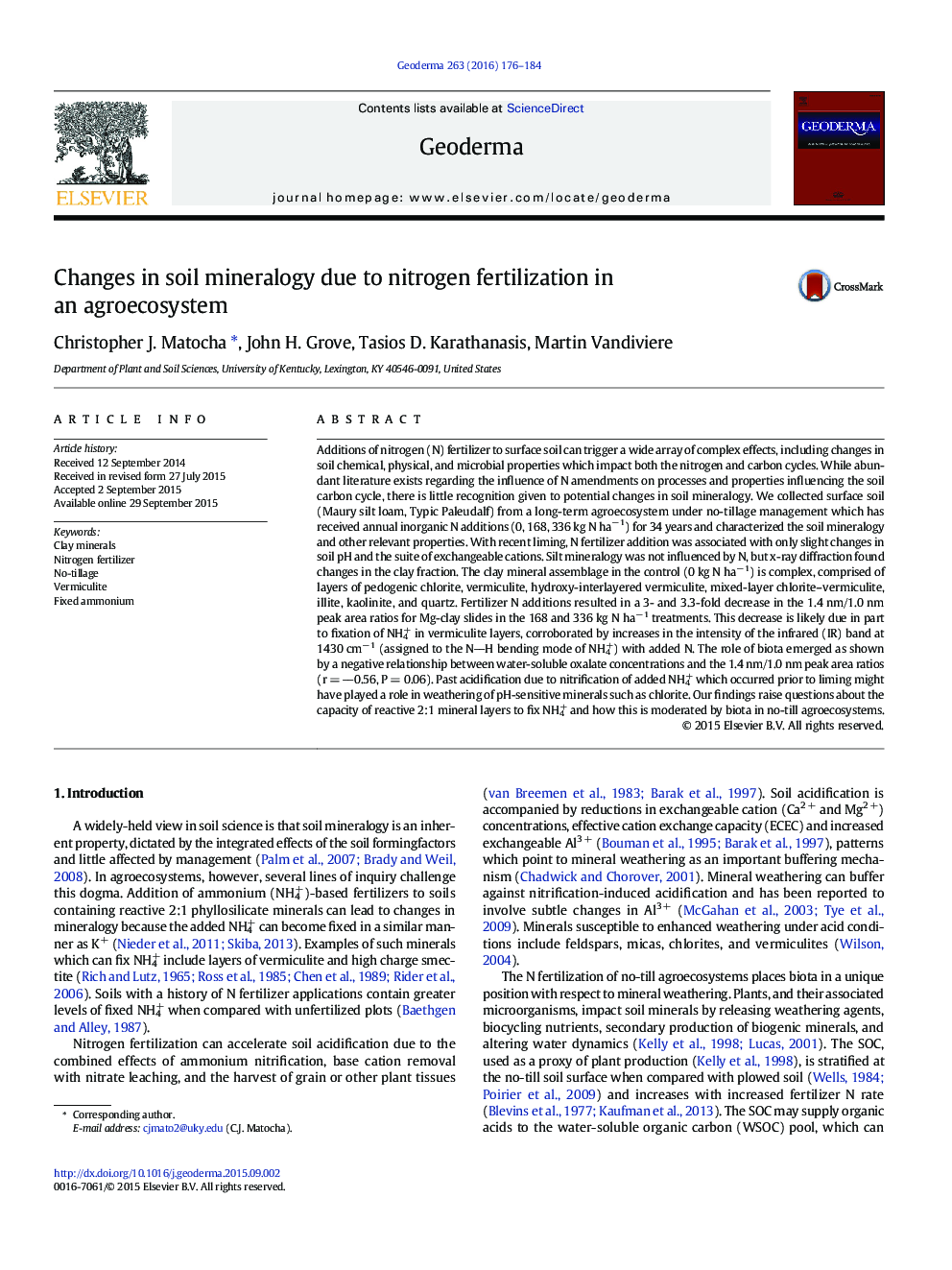| کد مقاله | کد نشریه | سال انتشار | مقاله انگلیسی | نسخه تمام متن |
|---|---|---|---|---|
| 6408473 | 1629453 | 2016 | 9 صفحه PDF | دانلود رایگان |
- We examined soil mineralogical changes due to nitrogen fertilization additions.
- Increasing nitrogen fertilizer rates resulted in ammonium fixation in the clay fraction.
- Mineralogical shifts might also be due to past acidification and biota.
Additions of nitrogen (N) fertilizer to surface soil can trigger a wide array of complex effects, including changes in soil chemical, physical, and microbial properties which impact both the nitrogen and carbon cycles. While abundant literature exists regarding the influence of N amendments on processes and properties influencing the soil carbon cycle, there is little recognition given to potential changes in soil mineralogy. We collected surface soil (Maury silt loam, Typic Paleudalf) from a long-term agroecosystem under no-tillage management which has received annual inorganic N additions (0, 168, 336 kg N haâ 1) for 34 years and characterized the soil mineralogy and other relevant properties. With recent liming, N fertilizer addition was associated with only slight changes in soil pH and the suite of exchangeable cations. Silt mineralogy was not influenced by N, but x-ray diffraction found changes in the clay fraction. The clay mineral assemblage in the control (0 kg N haâ 1) is complex, comprised of layers of pedogenic chlorite, vermiculite, hydroxy-interlayered vermiculite, mixed-layer chlorite-vermiculite, illite, kaolinite, and quartz. Fertilizer N additions resulted in a 3- and 3.3-fold decrease in the 1.4 nm/1.0 nm peak area ratios for Mg-clay slides in the 168 and 336 kg N haâ 1 treatments. This decrease is likely due in part to fixation of NH4+ in vermiculite layers, corroborated by increases in the intensity of the infrared (IR) band at 1430 cmâ 1 (assigned to the NH bending mode of NH4+) with added N. The role of biota emerged as shown by a negative relationship between water-soluble oxalate concentrations and the 1.4 nm/1.0 nm peak area ratios (r = 0.56, P = 0.06). Past acidification due to nitrification of added NH4+ which occurred prior to liming might have played a role in weathering of pH-sensitive minerals such as chlorite. Our findings raise questions about the capacity of reactive 2:1 mineral layers to fix NH4+ and how this is moderated by biota in no-till agroecosystems.
Journal: Geoderma - Volume 263, 1 February 2016, Pages 176-184
